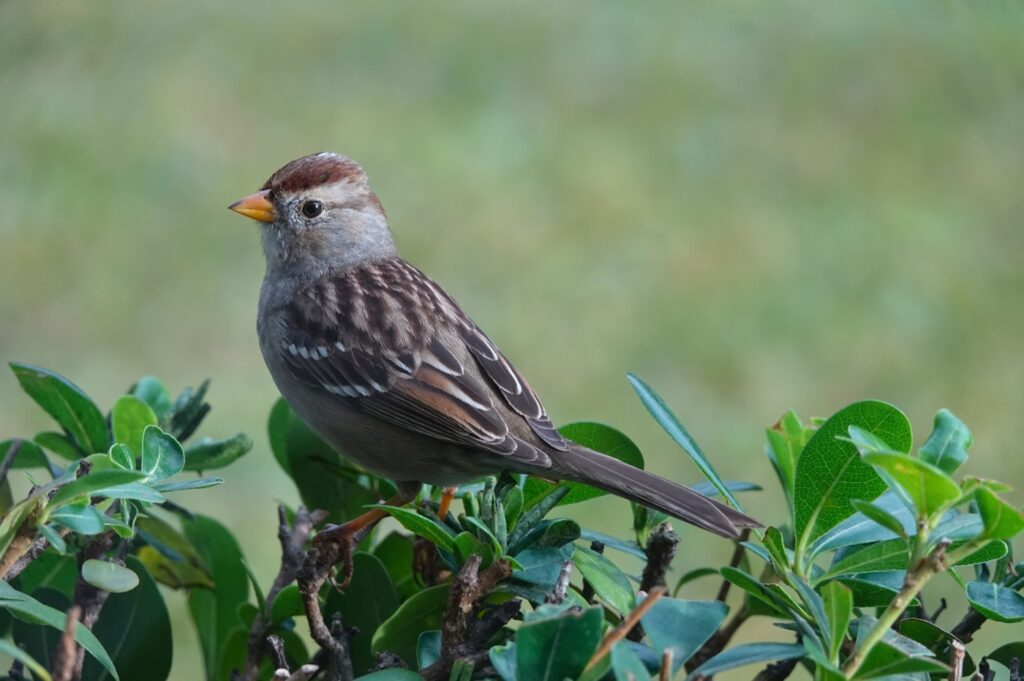
1. If you are looking for a way to relax, bird watching is for you and attracting birds to your garden is something to consider. “Birdscape” is a term that refers to a garden designed to attract avian creatures. This can be achieved by planting perennials such as abutilons, salvias, and honeysuckles as well as vines and shrubs with tubular blooms (Bignonias, Brugmansias, Tecomas, and Tecomarias), since they are all candidates for hummingbirds’ attention. Cotoneaster, pyracantha, and toyon (Heteromeles arbutifolia), on the other hand, are ornamentals that yield small, spherical red fruit that serve as delectable snacks for birds of every kind. Of course, you may want to think twice about birdscaping if you are growing lots of tree fruit and berries, unless you have bird netting covering your crops. Other common ornamentals whose fruit brings birds into the garden would include heavenly bamboo (Nandina spp.), Viburnum species, holly (Ilex spp.), and ornamental cherries such Carolina laurel cherry (Prunus caroliniana) and our own native Catalina cherry (Prunus ilicifolia lyonii). And to make sure you maximize the chances of avian visits to your garden, it would be worth thinking about addition of a birdbath, a birdhouse, and two bird feeders – one with sugar water for hummingbirds and one with seeds to be enjoyed by flocks of other avian species.
2. Consider native plants for coping with drought. Many native plants are finishing this year’s bloom period so visit native plant nurseries now to see which flowering plants you wish to bring home to your garden. Even though manzanitas have finished blooming, their smooth exfoliating bark is enough of an advertisement to persuade you to have them close by all year long. And speaking of natives with interesting bark, you will also want to consider water birch (Betula occidentalis) with smooth bronze to blackish bark and western redbud (Cercis occidentalis), with smooth gray bark. Where the latter is concerned, avoid acquiring a plant that has been trained into a standard (single trunk) tree since such specimens are prone to sunburn on their trunks. The natural form of a western redbud is more like that of a large shrub with multiple branches extending from the base of the trunk in a manner that foliage protects the bark from scorching in summer heat. The Catalina ironwood tree (Lyonothamnus floribundus) has peeling bark in an attractive reddish brown color. The fernleaf (asplenifolius) subspecies of Catalina ironwood has decorous sawtooth foliage as well. Last, but not least, the California sycamore (Platanus racemosa) has smooth cream-colored bark that is forever in a pleasantly exfoliating mode.
3. If you wish to prune or shape azaleas or camellias, do that when they finish blooming. You will see more blooms next year than this year by cutting back last year’s growth, as more side branches and more flower buds will develop. Also make sure to remove all withered flowers, whether they are still on the plant or have fallen to the ground, as these can harbor fungus diseases. As for fertilization, camellias should receive their first dose now, another dose in six weeks, and another dose six weeks after that for maximum bloom next year. Azaleas should be fertilized now and in later September. Any fertilizer recommended for acid-loving plants will do. Never cultivate around camellias or azaleas due to their shallow roots. Instead, keep a layer of mulch around them at all times.
4. Fertilize ferns once a month with mild products such as fish emulsion (yes, it stinks, but it does the job) or cottonseed meal. You can also use a more concentrated liquid fertilizer as long as it has percentages of phosphorus and potassium that match the percentage of nitrogen. Make sure the soil is well soaked before fertilizer application since ferns are more susceptible to fertilizer burn than most plants. Consider planting a staghorn fern or, more properly stated, attaching one to a tree trunk or mounting one on a board or fence. These ferns are epiphytic in their habitat, meaning that they grow on trees. They will need protection from full sun and do best in filtered light or partial sun conditions. You can soak them with a liquid fertilizer every two to three months. The last time I visited the Huntington Botanic Gardens in San Marino there was a huge staghorn fern attached to an ancient live oak (Quercus agrifolia), a successful marriage between tropical and chaparral species.
Related Articles
How to choose the best landscape tree for your home or garden
Kitchen upgrades: New design ideas focus on color, cubbies, connectivity
How to reduce water use in the garden as drought brings restrictions
Weeds, gophers and vegetables: What to do in the garden this week
How to keep those roses and trees healthy and alive
5. Be on the lookout for volunteer plants that, before you know it, can gain a foothold and require significant effort to uproot. In my neighborhood, I have to regularly contend with seedlings from Chinese elm (Ulmus paravifolia), Shamel ash (Fraxinus uhdei), loquat (Eriobotrya japonica), fig (Ficus carica), mulberry (Morus alba), Brazilian pepper (Schinus terbinthifolius), Canary Island palm (Phoenix canariensis), glossy privet (Ligustrum lucidum), crape myrtle (Lagerstroemia indica), pride of Madeira (Echium candicans), and Peruvian lily (Alstroemeria spp.). Many of these plants are pleasing when situated in the right spot but are problematic in my average size garden. The exception is Peruvian lily. Although it grows rampantly this time of year and I have to aggressively pull it from around other plants, I do not begrudge its precociousness since it is not deep rooted and its foliage makes wonderful mulch. And I especially don’t mind the proliferation of the tall Third Harmonic variety since its silky flower petals are a distinctive orange that fades to salmon and then to yellow when cut. All Peruvian lilies make wonderful cut flowers, reliably lasting for two weeks in vase arrangements.
Send questions, comments, and photos to joshua@perfectplants.com
